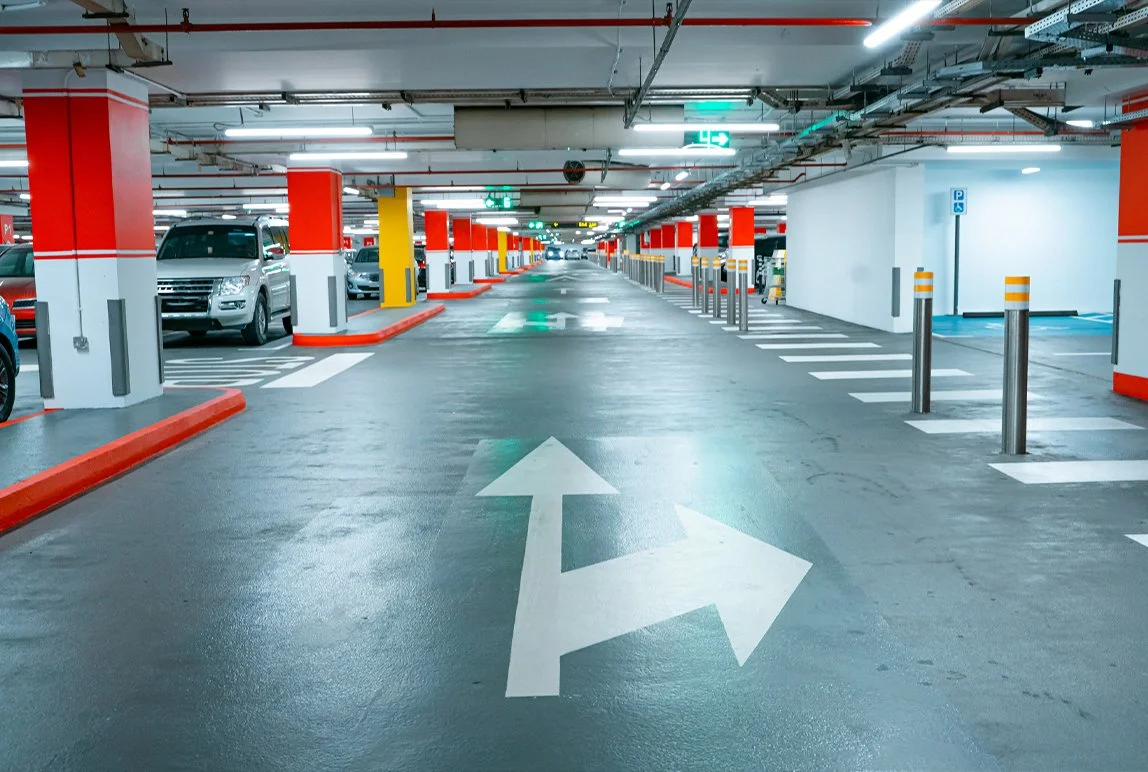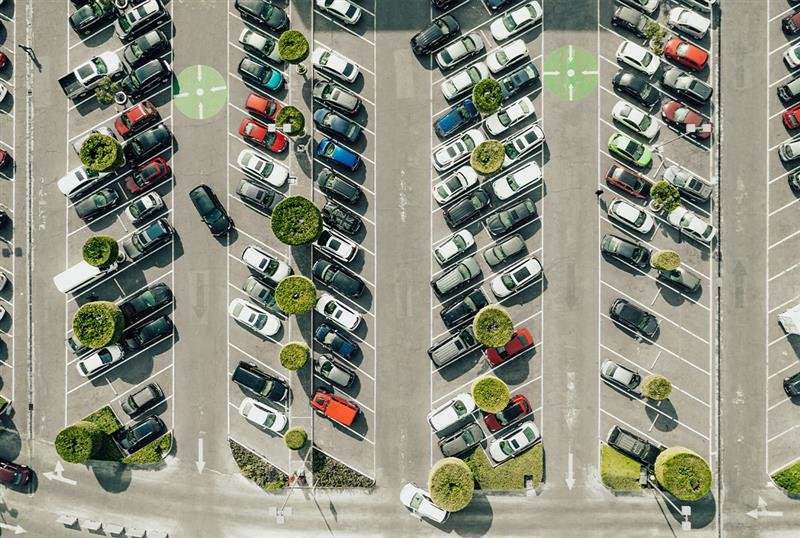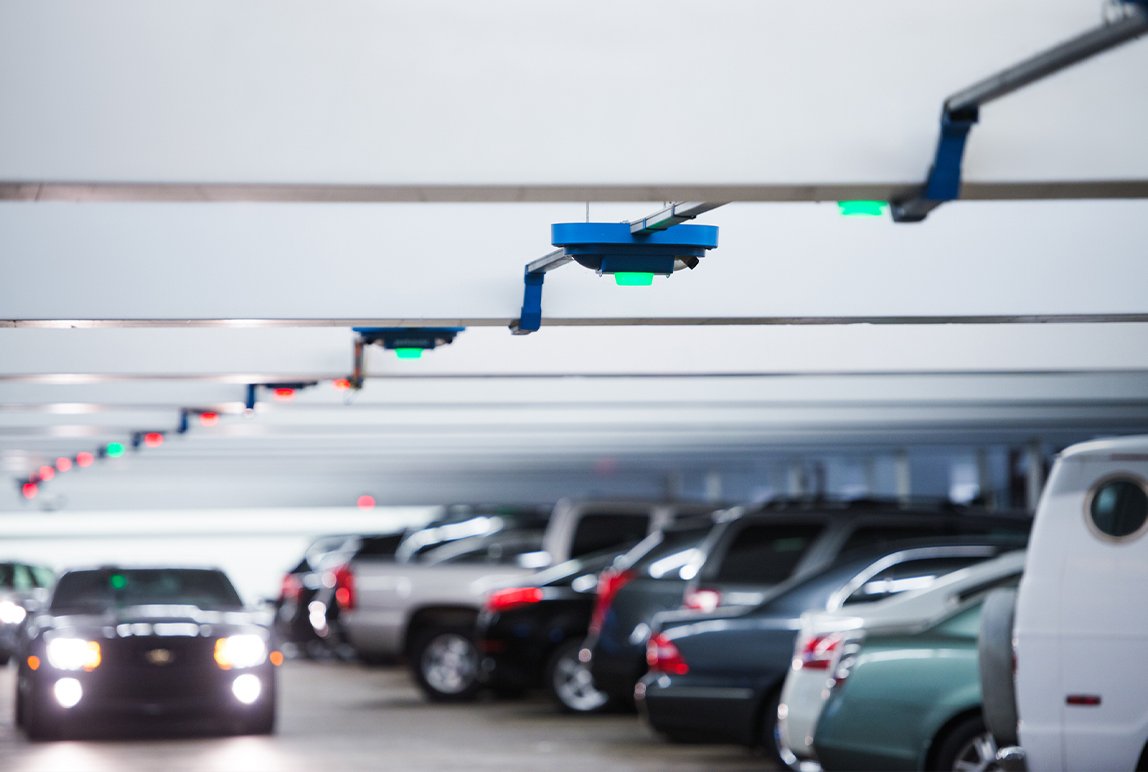The Basics of Efficient Parking Lot Layout and Flow
Posted: Jul, 21, 2025 10:543PM ET • 2.5 min read
As mobility expectations evolve, parking facilities must embrace innovation to stay efficient, user-friendly, and future-ready. Today’s drivers demand speed, convenience, and technology-integrated solutions. Traditional layouts no longer meet these needs; modern design relies on real-time data, adaptive planning, and smart infrastructure. This article explores the core principles and emerging technologies that drive efficient parking lot layout and flow.
Smart Guidance Systems for Better Flow
Effective traffic flow starts with clear, intuitive navigation. Directional signage reduces confusion and congestion by guiding drivers efficiently through entry points, levels, and exits. When combined with smart parking guidance systems—such as LED indicators and sensors —drivers are directed to available or designated spaces with ease. This integrated approach minimizes search time, eases vehicle movement, and reduces bottlenecks within the facility.
Using Data for Layout Optimization
Data analytics is transforming how parking layouts are designed and managed. By identifying high-traffic zones and usage trends, facilities can adjust layouts, improve circulation, and plan expansions based on actual behaviour. AI and IoT technologies monitor and predict demand patterns, enabling dynamic adjustments to traffic flow and resource allocation. From staffing to signage, real-time insights empower managers to make smarter, more responsive decisions, ultimately improving the customer experience and operational efficiency.
Tailored Solutions Through Client Collaboration
No two parking facilities are alike— customization is key. Collaborating with clients during the design phase ensures solutions meet site-specific requirements. From EV charging and mobile app integration to ticket validation and specialty parking features, designs can be tailored to support unique user needs. This collaborative, client-focused approach enables long-term scalability, ensuring the facility can adapt to evolving technologies, customer expectations, and business growth strategies.
Smart parking starts with smart design. With the help of data-driven insights and user-centric customization, facilities can streamline flow, enhance the parking experience, and future-proof operations. Forward-thinking layouts don’t just increase efficiency, they shape how people connect with spaces, services, and communities.
References
Lereno, E. (2024, September 6). The new essential 8: Technologies to consider when developing your future parking technology strategy. Parking Industry. https://www.parkingindustry.ca/parking-technology/the-new-essential-8-technologies-to-consider-when-developing-your-future-parking-technology-strategy?rq=parking+Layout
Parking Industry. (2022, July 27). How can parking guidance improve traffic flow in my parking facility?. Parking Industry. https://www.parkingindustry.ca/feature-articles/how-can-parking-guidance-improve-traffic-flow-in-my-parking-facility?rq=parking+flow
Sgorlon, A. (2023, December 21). 5 data sets you can gather from Smart Parking Guidance Systems. Parking Industry. https://www.parkingindustry.ca/parking-management/5-data-sets-you-can-gather-from-smart-parking-guidance-systems?rq=parking+Layout
Share Article:
Featured Articles
ABOUT THE AUTHOR
Jay Ryatt
Director, Field Management
Jay is one of Precise ParkLink’s great success stories. Fifteen years ago, he started on the ground floor as a co-op student in our electrical division and then worked through an apprenticeship before, in 2003, obtaining his electrician ticket and becoming certified as a master electrician two years later.
Questions?
Fill out the form below and we will do our best to connect you with a suitable contact.













